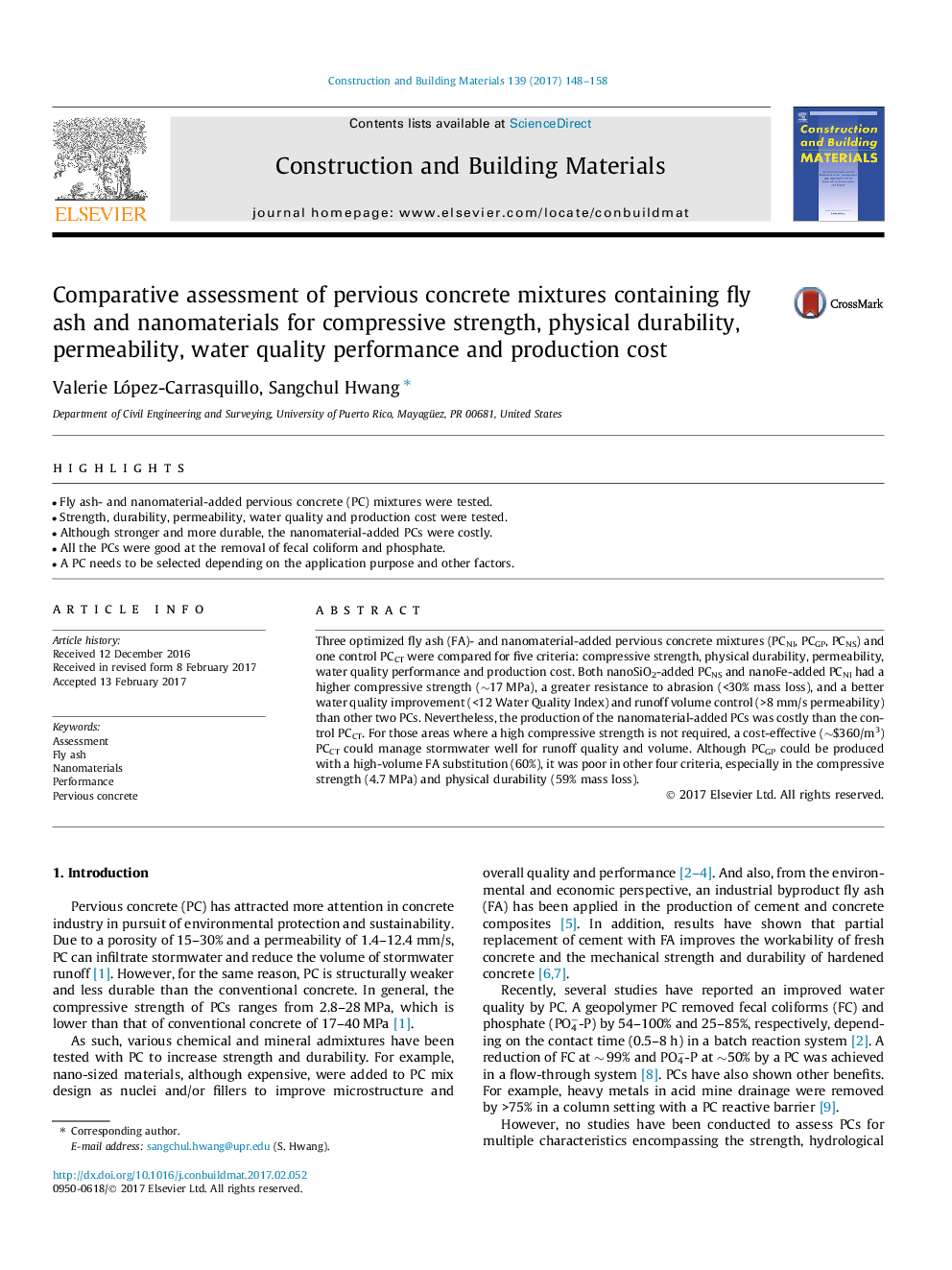| Article ID | Journal | Published Year | Pages | File Type |
|---|---|---|---|---|
| 4913488 | Construction and Building Materials | 2017 | 11 Pages |
Abstract
Three optimized fly ash (FA)- and nanomaterial-added pervious concrete mixtures (PCNI, PCGP, PCNS) and one control PCCT were compared for five criteria: compressive strength, physical durability, permeability, water quality performance and production cost. Both nanoSiO2-added PCNS and nanoFe-added PCNI had a higher compressive strength (â¼17Â MPa), a greater resistance to abrasion (<30% mass loss), and a better water quality improvement (<12 Water Quality Index) and runoff volume control (>8Â mm/s permeability) than other two PCs. Nevertheless, the production of the nanomaterial-added PCs was costly than the control PCCT. For those areas where a high compressive strength is not required, a cost-effective (â¼$360/m3) PCCT could manage stormwater well for runoff quality and volume. Although PCGP could be produced with a high-volume FA substitution (60%), it was poor in other four criteria, especially in the compressive strength (4.7Â MPa) and physical durability (59% mass loss).
Related Topics
Physical Sciences and Engineering
Engineering
Civil and Structural Engineering
Authors
Valerie López-Carrasquillo, Sangchul Hwang,
